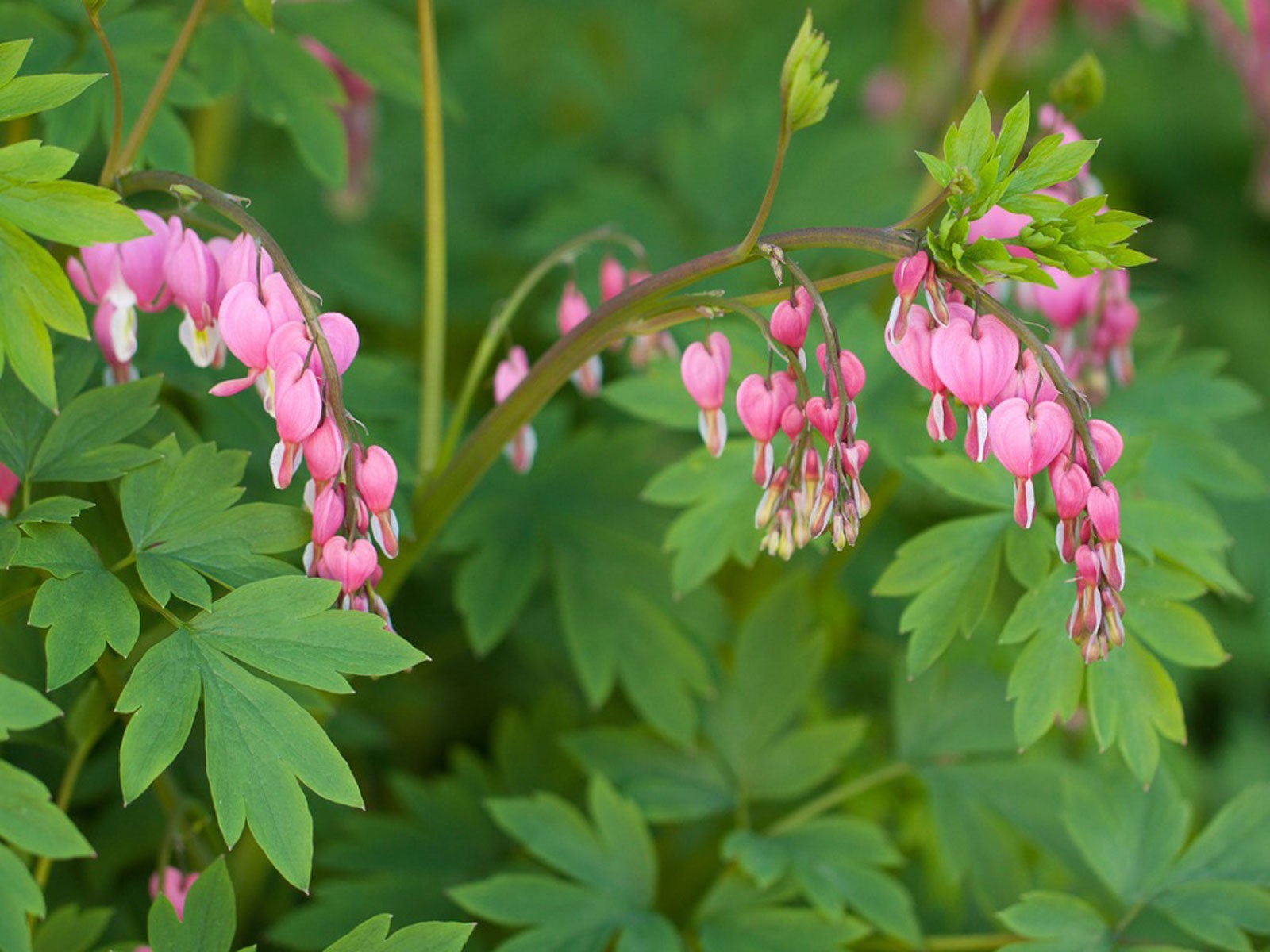Perennial Plants For Shade Gardens – What Are The Best Shade Perennials


Got some shade but need plants that come back each year? Shade-tolerant perennials often have characteristics that help them capture light effectively, such as large or thin leaves. Flowers often play second fiddle to the showy foliage. So, what are the best shade perennials?
Shade Plants That Come Back Every Year
Perennial plants for shade tend to be relatively slow growing. Most perennials for shade need at least a little sunlight, which may be dappled through trees or reflected from a building. Selecting perennials for a shade garden may be easier than you think, as there is an impressive variety of beautiful, shade-tolerant perennials.
Here are just a few, along with their USDA growing zones:
- Ajuga: Ajuga is a low-growing plant, valued for its colorful foliage, such as silver with burgundy splashes or green with a hint of purple. The blue flowers in springtime are pretty as well. Plant ajuga where it has room to spread, as it can be rambunctious. Zones 3 through 9.
- Bleeding Heart: Bleeding heart (Dicentra spectabilis) is one of the loveliest shade-tolerant perennials. The pink or white, heart-shaped blooms dangling from graceful, arching stems are stunning. Bleeding heart blooms in spring and goes dormant in summer. Zones 3 through 9.
- Heuchera: Heuchera produces tall, bell-shaped flowers but it’s the foliage that makes this plant a stand-out among perennials for a shade garden. Heuchera (coral bells) comes in a variety of forms, including big heart shaped, ruffled, or rounded leaves and colors such as green, silver, red, chartreuse, orange, bronze, purple, and red.
- Astilbe: Astilbe is a great choice for light to moderate shade and won’t tolerate bright sunlight. This plant displays ferny foliage and unique, feathery flowers in shades of pink, burgundy, red, lavender, salmon, and white. Zones 4 through 8.
- Foamflower: Foamflower is a woodland wildflower named for the pale pink flowers that resemble ocean foam. The heart-shaped leaves are often marked with purple or reddish veins. Foamflower is a groundcover that spreads via runners and works well in partial to heavy shade, with sunlight only in the morning. Zones 4 through 9.
- Hostas: Hostas are popular, and for good reason. This easy-to-grow plant comes in a variety of sizes and shapes with colors ranging from green and chartreuse to gold, blue, and white. Tolerance to shade varies, but generally, the darker the leaves the less sun it requires. Zones 4 through 8.
- Japanese Forest Grass: Japanese forest grass (Hakonechloa) is an ideal selection for partial or light shade; the leaves will burn in full sun, but the colors won’t be as vivid in deep shade. This plant may not be a good choice for climates with hot summers. Japanese forest grass displays clumps of graceful, arching leaves of bright golden yellow with a reddish tint in autumn. Zones 4 through 8.
Gardening tips, videos, info and more delivered right to your inbox!
Sign up for the Gardening Know How newsletter today and receive a free copy of our e-book "How to Grow Delicious Tomatoes".

A Credentialed Garden Writer, Mary H. Dyer was with Gardening Know How in the very beginning, publishing articles as early as 2007.
-
 Get Ready For A Summer Of Hummers! Grow These Full Sun Hummingbird Plants and Flowers
Get Ready For A Summer Of Hummers! Grow These Full Sun Hummingbird Plants and FlowersIf you’re lucky enough to enjoy a sunny backyard, make sure you are maxing out on your pollinator opportunities and grow these full sun hummingbird plants and flowers
By Tonya Barnett
-
 12 Lush Alternatives To A Lawn For Sustainable Spaces
12 Lush Alternatives To A Lawn For Sustainable SpacesAlternatives to a lawn are beautiful and also beneficial to your local ecosystem and its pollinators. Explore our top picks for plants to replace grass.
By Tonya Barnett